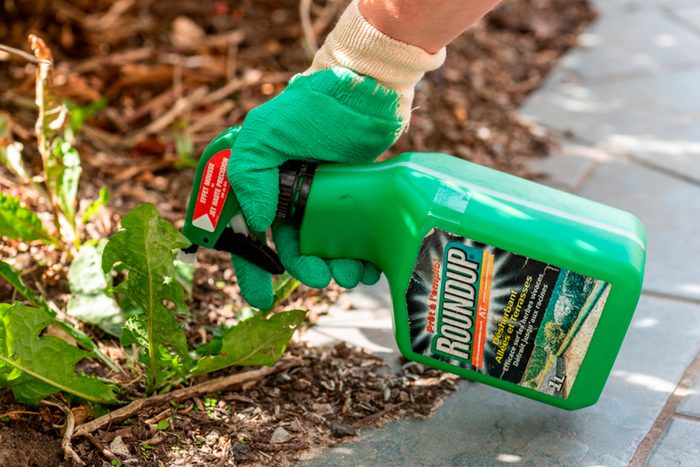
Pesticides
No one likes batting away flies or having your zinnias destroyed by beetles. But even organic-labeled pesticides can be toxic, according to Lowes‘ master gardener Lester Pole. If you use pesticides of any kind and your pet shows signs of lethargy, nausea, or breathing issues, call your vet immediately, advises Carole A. Langrall, a master gardener and landscaper in Maryland. For a nontoxic alternative, Pole suggests any of these pest-deterring botanical extracts.
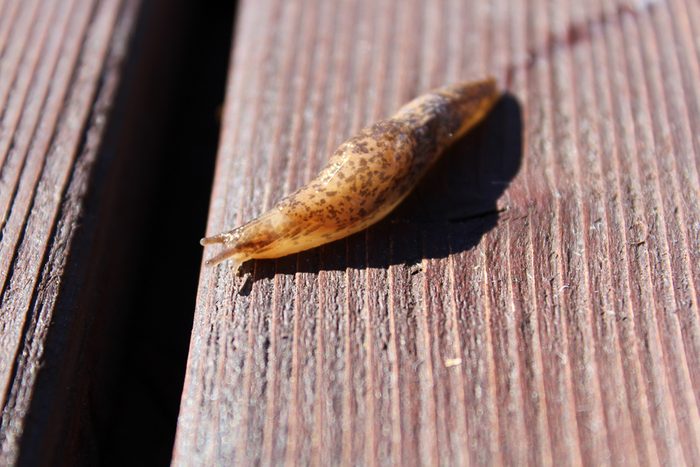
Slug treatment
Be careful when treating for slugs, advises Alecia Weisman, lead grower and resident scientist at the Legion of Bloom. “Many slug pesticides and snail baits contain metaldehyde, which is toxic for dogs and cats.” Weisman suggests using diatomaceous earth, which is effective against many insects and a much safer alternative.
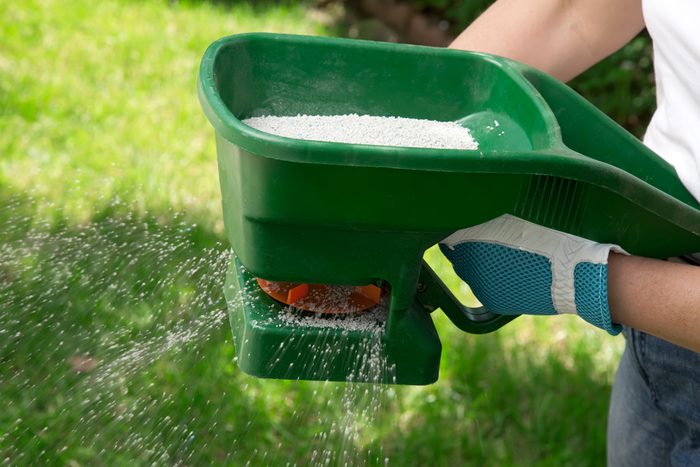
Chemical fertilizer
Chemical fertilizers can make your plants thrive, but depending on their active ingredients, they can be highly poisonous, Langrall tells Reader’s Digest. For example, “as little as one teaspoon of 1 percent disulfoton can kill a 55-pound dog,” she warns. Anything containing organophosphates can result in SLUD syndrome—salivation, lacrimation (tears), urination, and defecation. Together, the symptoms mean serious health issues for your pet. Before you use any chemical fertilizer, be sure to check the label for these ingredients.
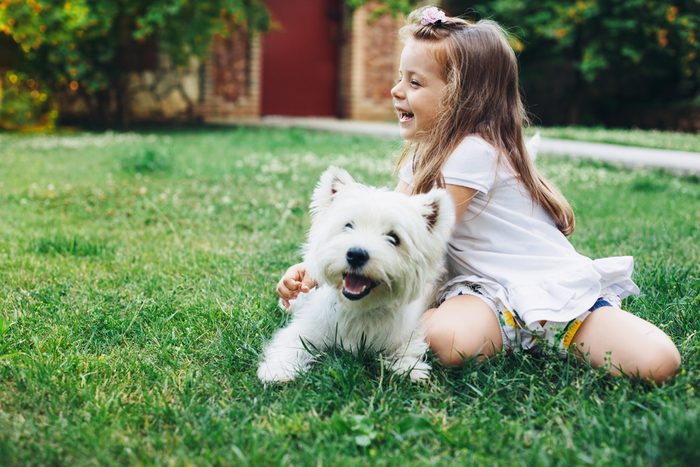
Bone meal fertilizer
Bone meal is a “natural” fertilizer, made up of ground animal bones. It’s good for your lawn, but it’s both toxic and appealing to your pets, according to Caleb Backe, a health and wellness expert for Maple Holistics. When ingested, bone meal can form a ball in your pet’s stomach, obstructing natural passage and leading to a host of health problems. Bone meal can also be poisonous, Backe advises. Therefore, it’s best not to use bone meal at all if you have pets that dig in the yard.
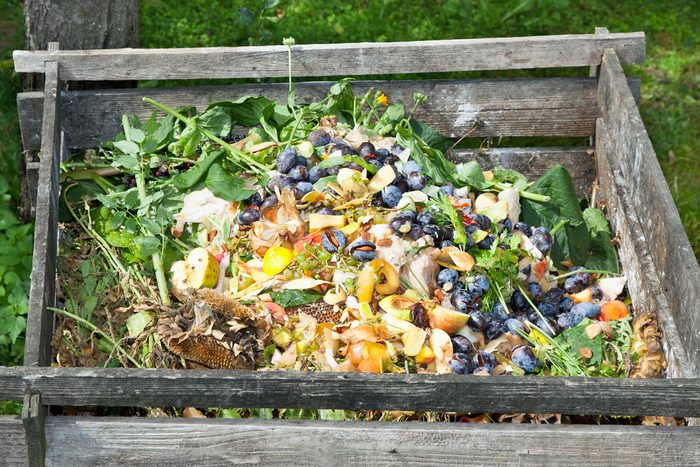
Compost
Because compost consists of decaying organic matter, it may give off chemical by-products known as tremorgenic mycotoxins, which are bad for your pets, according to both Langrall and veterinarian Gary Richter, DVM, MS, CVC, CVA. “Even small amounts can lead to hyperthermia, panting, drooling, and vomiting, and serious neurological symptoms such as tremors and seizures,” Dr. Richter explains. To keep your compost safe, never add dairy or meat products, and consider fencing off the pile.
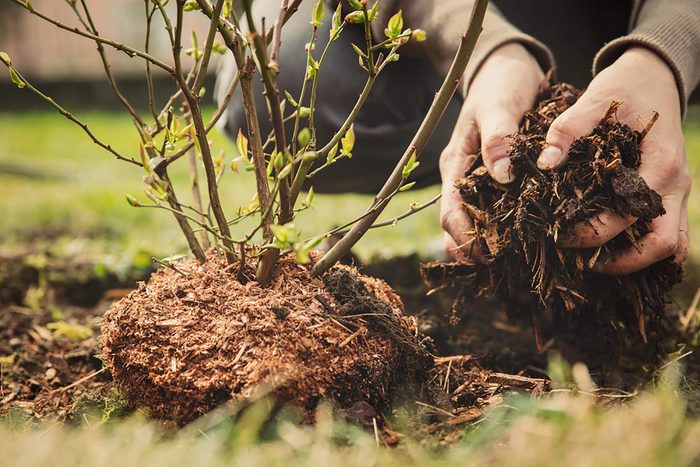
Cocoa bean mulch
Mulching is great for your garden. It can halt the onslaught of weeds and help keep your plants cool and hydrated in the heat of summer. But if you have a dog, don’t use mulch made from cocoa beans. “The mulch is a by-product of chocolate production and made of the discarded hulls of cocoa beans. This mulch is attractive to homeowners because it’s fragrant and attractive-looking. But it could be lethal for your dog,” Langrall warns. Instead, consider mulches that contain no chocolate by-products, such as those made from pine and cedar.
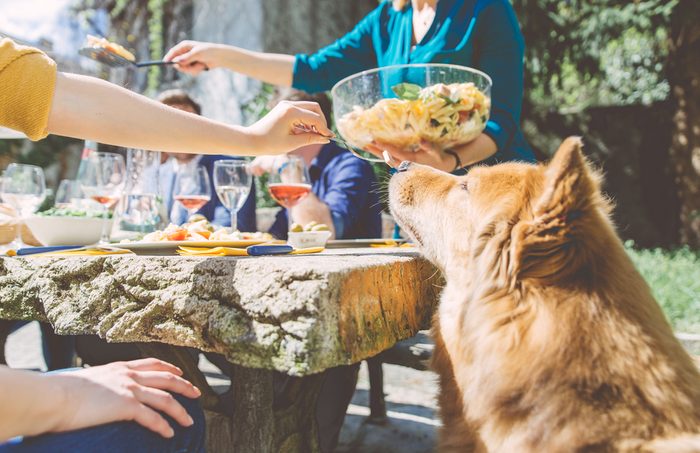
Your barbecue
“If you’re hosting a backyard barbecue with friends and family, try to keep the scraps on the table,” according to the experts at Pets Best. “Many humans love sharing under the table—but some common human foods are dangerous and downright deadly to dogs.” While the best-known problem food is chocolate, other potentially toxic foods include avocados, grapes, raisins, macadamia nuts, onions, garlic, and coffee. Read more about foods that are toxic to dogs.
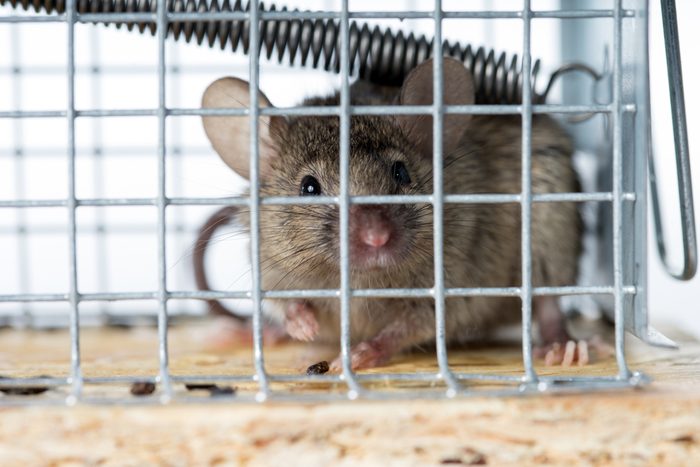
Mouse and rat poison
Most rodenticides are poisonous not only to rodents but also to pets and children, Langrall advises. Look for nontoxic means of deterring rodents, like traps. If you do resort to using baits containing toxins, be sure to place them in areas where your pet and kids can’t reach, such as high up on shelves or hidden behind common-use areas. Beware of these 11 household items that are also hazardous to your pet’s health.
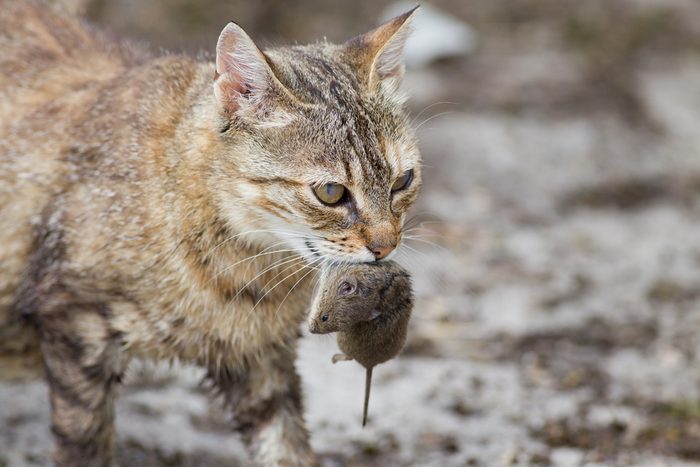
Poisoned mice and rats
Dogs and cats will go after rodents, and poisoned ones are easier to catch. That could deliver a lethal dose to your pet, which is even more reason to seek out nontoxic rodent solutions. All rodenticides pose the potential for what is known as “relay toxicity,” Langrall says—a toxic reaction to eating an animal that’s been poisoned.
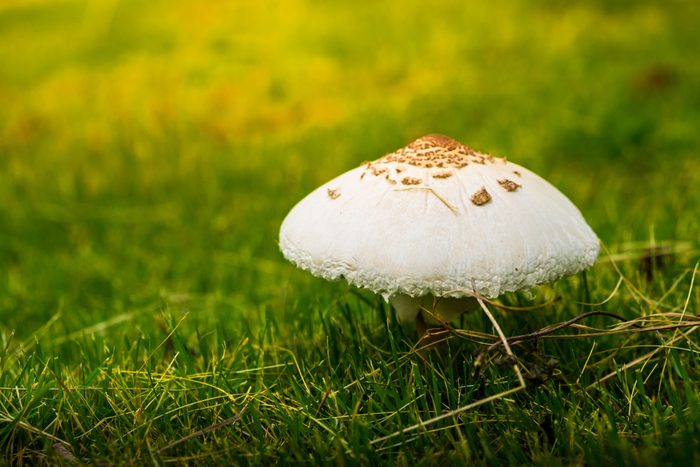
Mushrooms
Although most mushrooms are nontoxic, some are incredibly dangerous, Langrall tells us. Toxic fungi can trigger liver failure and death. Keep an eye out for mushrooms growing in your backyard (they may look like white fungus balls in your soil) and, unless you’re an expert forager, pull them and dispose of them before your pets or kids get anywhere near them.

Fireworks
Fireworks are not only dangerous for kids but can also be poisonous to pets. “It may seem odd that pets would be attracted to these,” Langrall notes, “but some actually are.” Unfortunately, licking or eating fireworks can result in burns, injury to the animal’s mouth, eyes, or paws, and possible heavy-metal toxicity. If you suspect that your pet got into the fireworks, call the vet immediately.
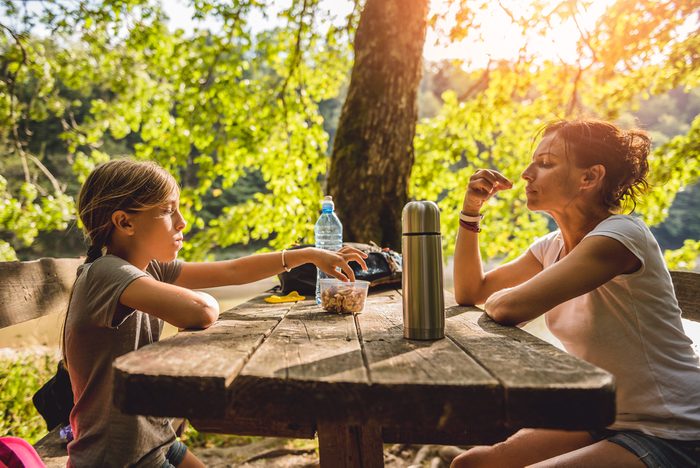
That old swing set or picnic table
If you have an ancient swing set or picnic table made of pressed wood (a type of faux wood made from bits and pieces of wood scraps), you should consider tossing it, according to parenting expert and mom Cherie Corso. “The glue that holds the wood particles in place may contain a form of formaldehyde that can cause burning eyes and throat, difficulty breathing, and asthma attacks. It also causes cancer in lab animals.” Newer pressed-wood materials tend to be safer, she notes.
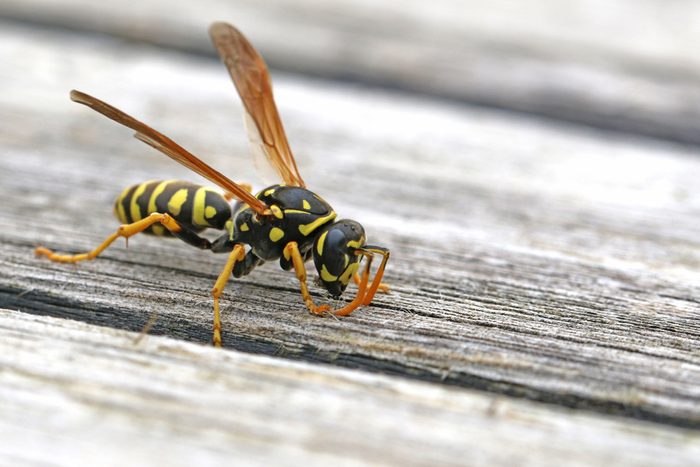
Wasps
Theodore Beasley, a professional landscaper from London, points out that wasps and bees represent a hazard not only for allergic humans but also for curious dogs and cats. Beasley tells Reader’s Digest that an attack “may not be fatal, but you should still rush your pet to the vet as soon as possible.”
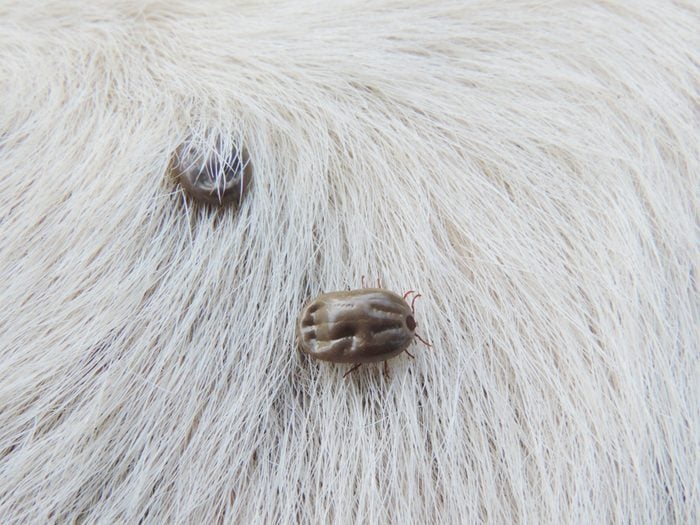
Fleas and ticks
You probably know about ticks and Lyme disease, but did you know that fleas can also carry bugs that can sicken your dog with a type of typhus, parasites, and—really—cat scratch fever? Tony Smith, owner of Nursery Enterprises, tells Reader’s Digest his natural remedy for these pests: “If your pets spend much of their time near the soil, then sprinkle nematodes that prey upon fleas and ticks all around the soil near the doghouse.” Nematodes are tiny, wormlike bugs that can kill many, if not all, of the fleas and ticks that come into contact with the soil—but they won’t hurt your pets.
=PLANTS
While our gardens provide beauty and are a way to commune with nature we must also be conscious that some of these beautiful plants are toxic to humans and pets. Here are some popular plants that can cause serious problems if ingested for humans and animals.
Azalea and Rhododendron: All parts of this plant are toxic if eaten in great quantities. The leaves are the most toxic, but all parts of the plant, including trimmings, are toxic. Human fatalities from eating this plant are rare.
Daffodils: The entire daffodil is poisonous, but especially the bulb. These flowers contain lycorine, a chemical compound that triggers vomiting.
Foxglove: For this beautiful flower the leaves, stems, flowers, and seeds are poisonous. If you have put this flower in a vase, the water in the vase would be poisonous too.
Lily of the Valley: All parts of the plant and berries are highly poisonous. With animals ingesting any part of the plant can cause vomiting, diarrhea, decreased heart rate, heart rhythm abnormalities and possibly seizures.
Chrysanthemums: Chrysanthemums are one of the most commonly eaten toxic plants. While ingesting this plant is not fatal if it is eaten by pets, it can cause serious problems to the animal. So be sure to keep them away.
Tomatoes: While we think edible plants will not cause any problems, they can be toxic to pets. The ripened fruit is fine (yes that is a relief). It is the green part of the plant that is toxic and if eaten in large quantities can cause severe poisoning.
If you are looking for pet safe solutions here are some of our favorites:
Flowers & Plants
Black Eyed-Susan
Marigolds
Pansies
Petunias
Sweet-Potato Vine
Zinnias
Edibles
Most herbs – Basil, Sage, Rosemary
Leafy greens – Lettuce, Spinach
Carrots
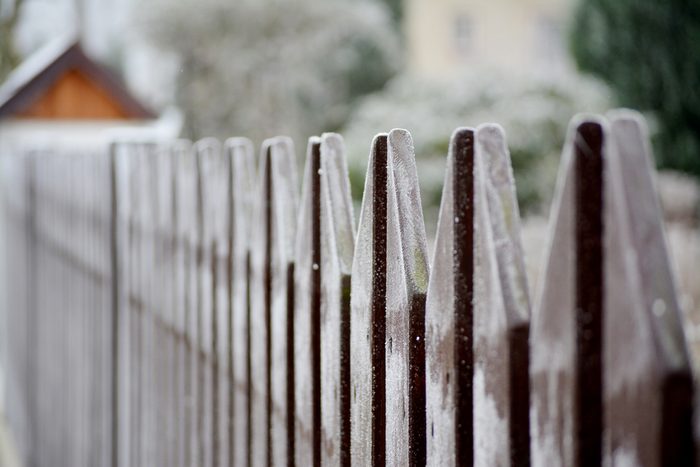
Lead
All too many backyards are still surrounded by fences covered in lead paint, Backe points out. “This is not only an environmental toxin, but it’s poisonous to dogs and humans alike. If your backyard is enclosed by an older fence coated in lead paint, there is every chance that your dog may break off a piece or find a piece of it that has already broken off due to natural decay,” Backe says. It’s a good idea to check all painted surfaces in and around your house for lead and to seek expert advice about getting rid of it safely. Also know what 10 things in your house could be making you sick.
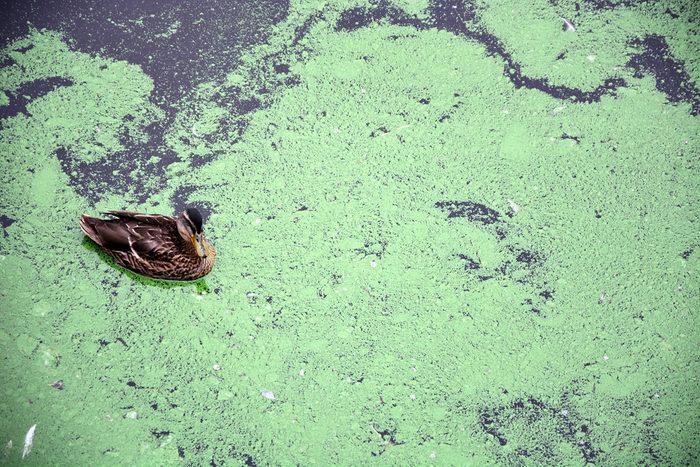
Pond scum
If that water feature in your backyard—pond, birdbath, etc.—develops algae on the surface, you’re looking at potentially harmful toxins, Langrall warns. “A quick drink by your dog could result in vomiting, diarrhea, or lethargy and lead to more serious medical troubles over time.” Getting rid of the algae is tricky: Even when it’s dead, it can still release toxins into the surrounding water. Consider a “barrier method”—keep your kids and pets away from the pond with these landscaping and hardscaping tricks.
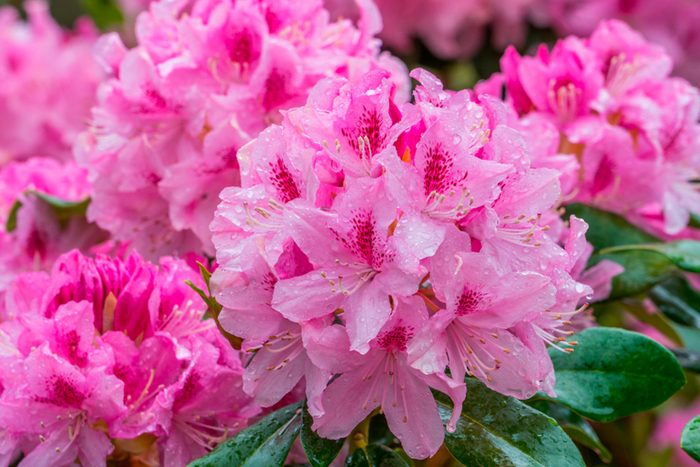
Toxic plants
Gardens provide beauty and a relaxing outlet, but many beautiful plants are toxic to humans and pets, gardening expert Susan Brandt of Blooming Secrets tells Reader’s Digest. The following popular plants can cause serious problems in humans and pets:
- Azaleas and rhododendrons: All parts of these are toxic.
- Daffodils: The entire daffodil is poisonous, but especially the bulb.
- Foxglove: Not only is the entire plant toxic, but if you put the flower in a vase, the water in the vase would be poisonous, too.
- Lily of the valley: All parts of the plant and berries are highly poisonous.
- Chrysanthemums: These are one of the most commonly eaten toxic plants. While ingesting chrysanthemums is not fatal to a pet, it can still cause serious problems for the animal.
- Tomatoes: Although we think edible plants will not cause any problems, they can be toxic to pets. The ripened fruit is fine; it’s the green part of the plant that is toxic and can cause severe poisoning.
Langrall advises that before planting anything in your garden, you consult the ASPCA’s list of toxic plants. If you’re looking for pet-safe solutions, some of Brandt’s favorites are black-eyed Susans, marigolds, pansies, petunias, and zinnias.
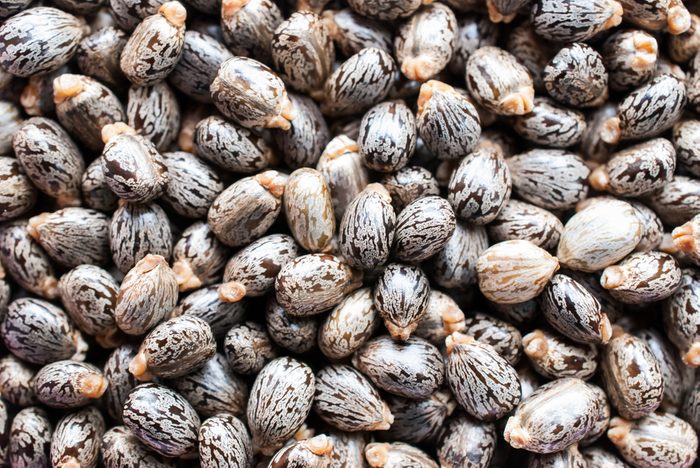
Castor bean
Ricinus communis is prized for its bold, exotic foliage and colorful seed pods. Unfortunately, all parts of the castor bean plant are extremely toxic, points out Steve Bender, author of The Grumpy Gardener and senior garden editor for Southern Living magazine. The only exception is the oil obtained by pressing the seeds, which has medicinal uses. The seed hulls, however, contain ricin, a toxin more powerful than cyanide.
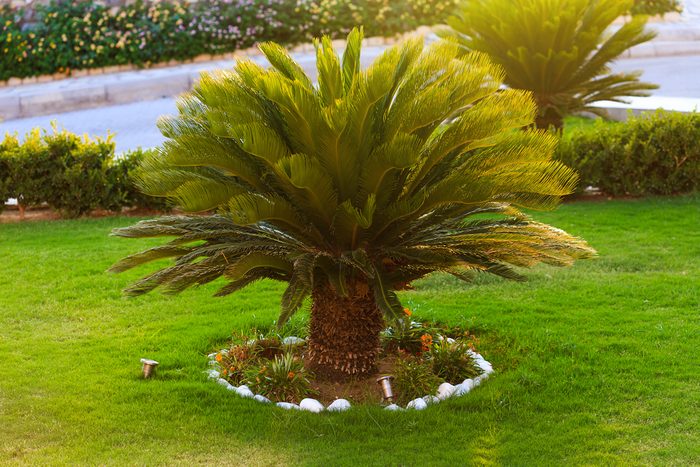
Sago palm
Beware the seed of the sago palm, Bender warns. “Prized for its feathery fronds, this shrub has separate sexes”—and the female is lethal. “The male plant is no threat, but the females produce a ball-shaped structure that develops egg-shaped red or orange seeds.” A single seed can kill your pet, he adds.
